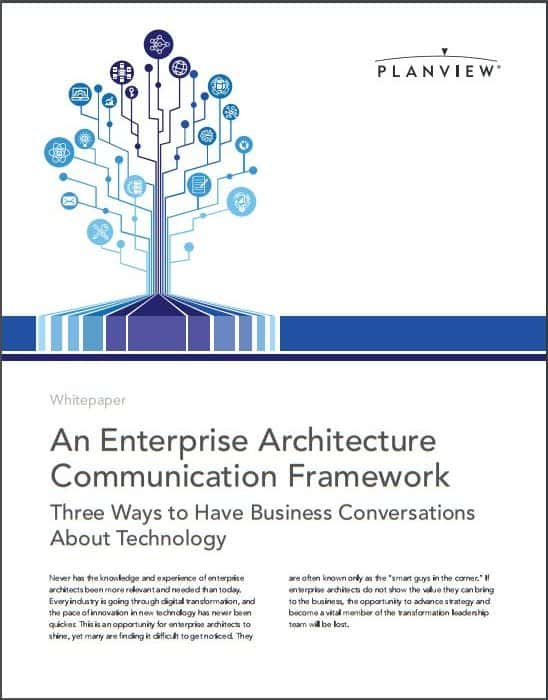
A recent analysis by Planview found that today’s enterprise architects (EA) must not only be technical but also be strategic.
The team looked at a random set of 100 job postings at different companies and identified the most common hiring characteristics employers are looking for in candidates. According to Jeff Ellerbee, solutions marketing manager at Planview, the objective of the analysis was to gain insights into 1) the different job requirements for today’s enterprise architects, and 2) identify industry patterns to ensure Planview solutions compliment those requirements through its capabilities.
14 Hiring Trends
At the top of the list, 97% of candidates must be able to “develop a roadmap to align business and IT strategy for the future success of the organization” (Trend 1).
This trend is encouraging because employers are starting to recognize that enterprise architects are key to planning and executing company strategy.
Additionally, 70% say they need a candidate that can “establish standard enterprise architecture policies, guidelines, securities, and processes across the organization” (Trend 2), which led the team to believe that some organizations are hiring enterprise architects for the first time or they are struggling to affect change and implement processes.
Furthermore, 70% need an enterprise architect that can influence the entire enterprise including “implementing improvement projects” (Trend 3). 67% want someone to “research and offer recommendations relevant to enterprise infrastructure technologies and trends” (Trend 4).
Employers today expect enterprise architects to be “highly knowledgeable when it comes to assessing strategic options and business opportunities.”
- 75 % must “translate business priorities/opportunities into IT strategy/solutions” (Trend 5)
- 83% must “provide guidance to individual project teams, the architecture team, and other business units” (Trend 6)
- 82% must “research, architect, and drive the implementation of new IT solution projects” (Trend 7)
- 79% must “assess new projects, software, and/or strategies with cost/benefit analyses” (Trend 8)
- 77 % must “make judgment calls” (Trend 9)
- 75% must “translate business priorities/opportunities into IT strategy/solutions” (Trend 10)
“This validated what we already thought was happening,” said Ellerbee. “The role of the EA is being elevated to meet the needs of the entire enterprise.”
Other results support that notion for instance, 65% of employers want the EA to work closely with business leaders, business stakeholders, and IT leaders to help shape the vision and priorities for enterprise architecture programs,” and 60% need the EA to serve as a technical/infrastructure expert in areas like application development, database design, network, and/or platform efforts.”
While not as common as the other trends, the remaining four shine a light on the cross-departmental communication that must happen with the business which is also critical to strategy execution:
- 52% must ensure information collaboration across entire organization with cross-functional strategies (Trend 11)
- 48% must collaborate with outside vendors for additional IT solutions (Trend 12)
- 41% must conduct quality checks ensuring EA policy compliance and resolving any issues in the entire enterprise (Trend 13)
- 40% must understand and interpret customer needs with necessary IT solutions (Trend 14)”
The bottom line: The analysis indicates that companies seeking to hire enterprise architects are looking for business-oriented individuals over purely technical architects. Enterprise architects must be business savvy as well as technical and adaptable in order to compete. This also shows that businesses looking for enterprise architecture software to help them advance their EA practices are looking for tools that cover both technical and business architecture to help them drive strategy and effect change within the business.
For more information on the growing role of enterprise architects and how to improve business conversations about technology, download the whitepaper, “An Enterprise Architecture Communication Framework.”





